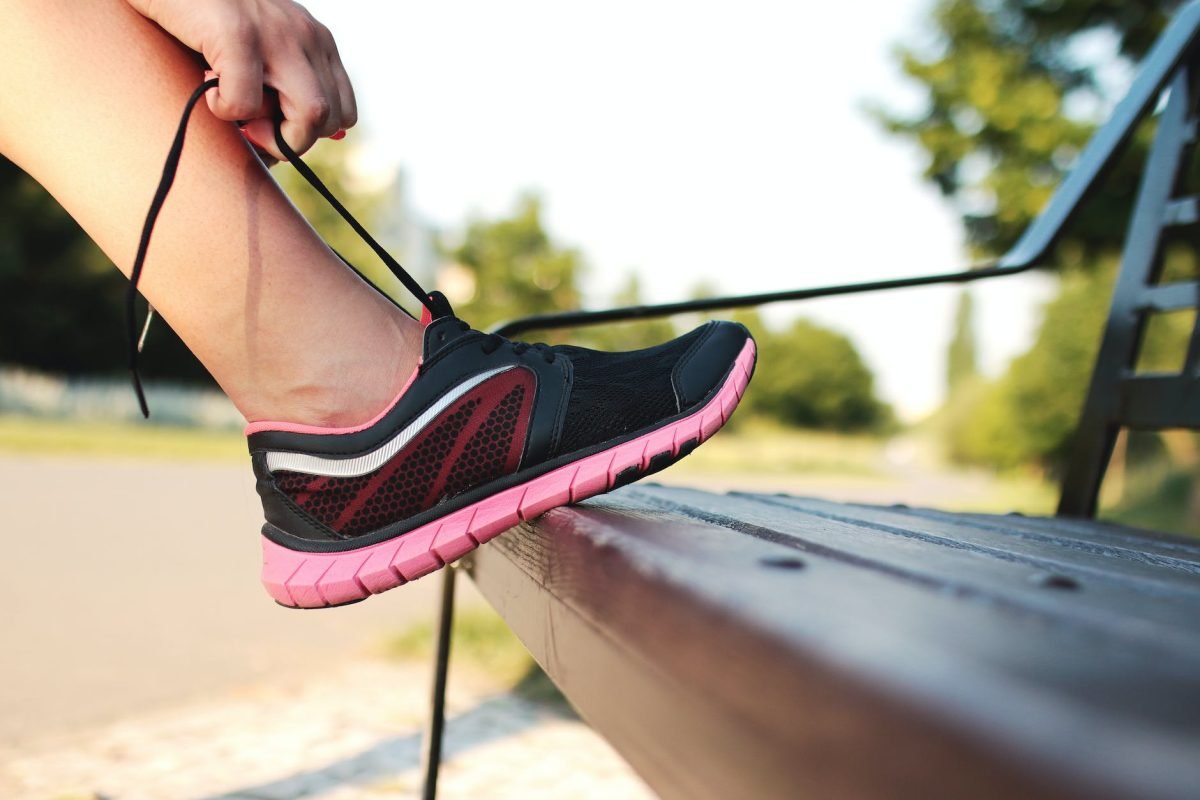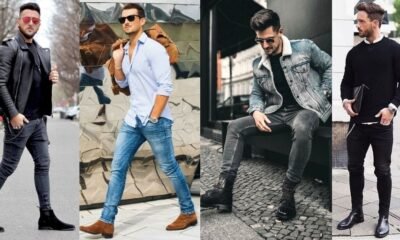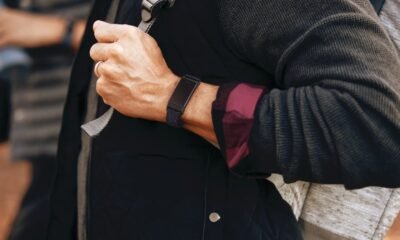Health & Fitness
The Best Running Shoes for Men and Women in 2023

In this post, we recommend and review some of the best running shoes for men and women, and how to choose the best one for your goals. Running is a great way to stay fit, healthy, and happy. But to enjoy running, you need the right shoes that suit your feet, your style, and your goals. Whether you’re a beginner or a seasoned runner, a road warrior or a trail lover, a sprinter or a marathoner, there’s a pair of running shoes out there for you.
But how do you choose the best running shoes for you? There are so many factors to consider, such as comfort, cushioning, stability, support, durability, breathability, weight, flexibility, responsiveness, traction, and of course, personal preference. To help you narrow down your options, we’ve searched the web for the most recommended running shoes for men and women in 2023.
Choosing the Right Running Shoes
Choosing the right running shoes is important for your comfort, performance, and injury prevention. Here are some steps you can follow to find the best running shoes for you:
Consider where you’re planning to run.
Different shoes are designed for different surfaces, such as roads, trails, or cross-training. Choose shoes that match your running environment and terrain. For example, if you run mostly on roads or tracks, you can go with shoes that have flatter, smoother soles and less traction. If you run on trails or uneven ground, you can opt for shoes that have bigger lugs, more grip, and more protection underfoot.
Decide if you want more or less cushioning underfoot.
Cushioning is the thickness and firmness of the material under the midsole of the shoe. It affects how much you feel the ground and how much impact the shoe absorbs. Some runners prefer more cushioning for a softer and smoother ride, while others prefer less cushioning for a firmer and more responsive feel. You can also consider the heel drop of the shoe, which is the difference in height between the heel and the forefoot. A higher heel drop (8-12 mm) can provide more cushioning and support for the heel, while a lower heel drop (0-6 mm) can promote a more natural and midfoot strike.
Understand whether you need a specific type of support for your gait.
Your gait is how your foot moves when you run. Most runners have a neutral gait, which means their foot lands evenly on the ground and rolls slightly inward. Some runners have an overpronation gait, which means their foot rolls too far inward, causing excess stress on the arch and inner side of the foot. Some runners have a supination gait, which means their foot rolls too far outward, causing excess stress on the outer side of the foot. Depending on your gait, you may need a neutral shoe, a stability shoe, or a motion-control shoe. A neutral shoe is suitable for most runners with a neutral gait or a mild overpronation or supination. A stability shoe has extra features to prevent excessive inward rolling of the foot, such as firmer foam or a medial post on the inner side of the midsole. A motion-control shoe has even more features to correct severe overpronation, such as a wider base or a stiffer heel counter.
Make sure the shoe fits well.
Your shoe should fit snugly but not tightly, leaving some room for your toes to wiggle and your foot to swell slightly during running. You should also avoid any rubbing, pinching, or slipping of the shoe on your foot. To get the best fit, you should:
- Measure both of your feet while standing and choose the size that fits your larger foot.
- Try on shoes later in the day when your feet are slightly swollen from walking or running.
- Wear socks that are similar to what you will wear when running.
- Lace-up your shoes properly and adjust them as needed.
- Walk or jog around in the shoes to see how they feel.
Best Running Shoes for Men
Best Overall: Hoka Mach 5
The Hoka Mach 5 is a versatile, lightweight shoe that can handle any distance and pace. It has a soft and springy midsole that provides ample cushioning and energy return, while the breathable mesh upper offers a snug and comfortable fit. The rubberized foam outsole delivers durability and grip on various surfaces. The Hoka Mach 5 is ideal for runners who want a well-rounded shoe that can do it all.
Best for Long Runs: Asics GlideRide 3
The Asics GlideRide 3 is designed to make long runs feel easier and more efficient. It features a curved sole that helps reduce ankle flexion and energy loss, while the FlyteFoam Propel midsole provides responsive cushioning and bounce. The engineered mesh upper is breathable and supportive, while the AHAR Plus outsole is durable and grippy. The Asics GlideRide 3 is perfect for runners who want to go the distance with less fatigue and more comfort.
Best Stability Shoe: Brooks Adrenaline GTS 22
The Brooks Adrenaline GTS 22 is a popular and reliable shoe with stability and support for overpronators. It uses GuideRails technology to gently guide the foot into proper alignment, while the DNA Loft midsole provides soft and smooth cushioning. The engineered mesh upper is breathable and flexible, while the rubber outsole is durable and tractional. The Brooks Adrenaline GTS 22 is ideal for runners who need extra guidance and protection without compromising on comfort.
Best Cushioned Trail Shoe: Salomon Ultra Glide 2
The Salomon Ultra Glide 2 is a trail shoe that offers plush cushioning and protection for long runs on rugged terrain. It has a thick and soft midsole that absorbs shock and adapts to uneven surfaces, while the Contagrip MA outsole provides grip and durability in wet and dry conditions. The SensiFit upper is breathable and secure, while the Quicklace system allows easy adjustment. The Salomon Ultra Glide 2 is ideal for runners who want to enjoy the trails with comfort and confidence.
Best Marathon Racer: Nike Vaporfly 3
The Nike Vaporfly 3 is a record-breaking shoe that has helped many elite runners achieve their personal bests in marathons. It features a carbon-fiber plate that propels the foot forward with every stride, while the ZoomX foam midsole provides lightweight and responsive cushioning. The Vaporweave upper is breathable and water-resistant, while the rubber outsole is durable and tractional. The Nike Vaporfly 3 is ideal for runners who want to run faster than ever before.
Best Running Shoes for Women
Best Overall: Mizuno Wave Rider 26
The Mizuno Wave Rider 26 is a classic and versatile shoe that can handle any distance and pace. It has a wave-shaped plate that provides cushioning and stability, while the U4icX foam midsole provides softness and bounce. The engineered mesh upper is breathable and adaptive, while the X10 rubber outsole is durable and grippy. The Mizuno Wave Rider 26 is ideal for runners who want a reliable and comfortable shoe that can do it all.
Best for Road Racing: Puma Deviate Nitro Elite 2
The Puma Deviate Nitro Elite 2 is a fast and light shoe that is designed for road racing. It features a carbon-fiber plate that enhances propulsion and efficiency, while the Nitro foam midsole provides responsive cushioning and energy return. The mono-mesh upper is breathable and supportive, while the PumaGrip outsole is durable and tractional. The Puma Deviate Nitro Elite 2 is perfect for runners who want to run faster and longer on the road.
Best for Beginners: Brooks Ghost 15
The Brooks Ghost 15 is a popular and dependable shoe that offers comfort and support for beginners. It uses DNA Loft technology to provide soft and smooth cushioning, while the BioMoGo DNA midsole provides adaptive cushioning and bounce. The engineered mesh upper is breathable and flexible, while the Segmented Crash Pad outsole provides smooth transitions and grip. The Brooks Ghost 15 is ideal for runners who need extra cushioning and protection without compromising on performance.
Best for Support and All-Terrain: Nike Air Zoom Pegasus 39
The Nike Air Zoom Pegasus 39 is a versatile and supportive shoe that can handle any terrain and condition. It features a React foam midsole that provides cushioning and responsiveness, while the Air Zoom unit in the forefoot provides extra bounce. The Flyknit upper is breathable and snug, while the rubber outsole with lugs provides grip and durability on various surfaces. The Nike Air Zoom Pegasus 39 is ideal for runners who want a supportive and adaptable shoe that can tackle any challenge.
Best for Lightweight: Reebok Floatride Energy Symmetros
The Reebok Floatride Energy Symmetros is a lightweight and responsive shoe that is designed for speed and comfort. It features a Floatride Energy Foam midsole that provides cushioning and energy return, while the Symmetros outsole provides stability and traction. The engineered mesh upper is breathable and secure, while the heel counter provides support and lockdown. The Reebok Floatride Energy Symmetros is ideal for runners who want a lightweight and responsive shoe that can boost their pace.
Benefits of Running
Running is not only fun but also beneficial for your physical and mental health. Here are some of the benefits of running:
- Running improves your cardiovascular fitness and lowers your risk of heart disease, stroke, high blood pressure, diabetes, obesity, and some cancers.
- Running strengthens your muscles, bones, joints, tendons, ligaments, and immune system, reducing your risk of injury, osteoporosis, arthritis, infections, and inflammation.
- Running boosts your mood, self-esteem, confidence, creativity, memory, concentration, learning, productivity, and sleep quality, reducing your stress, anxiety, depression, fatigue, insomnia, and cognitive decline.
- Running helps you burn calories, lose weight, maintain a fit body weight, shape your body, and improve your metabolism, appetite control, digestion, and blood sugar regulation.
- Running connects you with nature, other runners, yourself, your goals, your values, your emotions, your spirituality, and your sense of purpose.
Before Buying Running Shoes
Buying running shoes can be tricky, but you can avoid some common mistakes by following these tips:
Don’t buy shoes based on looks alone.
While it’s tempting to choose shoes that match your style or outfit, you should prioritize fit, feel, and function over fashion. Make sure the shoes suit your running needs, such as your surface, distance, pace, and gait. You can also consult a running shoe expert or a podiatrist to help you find the right shoes for you.
Don’t buy shoes based on price alone.
While it’s understandable to look for bargains or discounts, you shouldn’t compromise on quality or comfort. Cheap or poorly made shoes may not provide enough cushioning, support, durability, or breathability, which can lead to injuries, blisters, or discomfort. You should invest in shoes that are well-made and well-reviewed by other runners.
Don’t buy shoes that are too small or too big.
Your shoes should fit snugly but not tightly, leaving some room for your toes to wiggle and your foot to swell slightly during running. You should also avoid any rubbing, pinching, or slipping of the shoe on your foot. To get the best fit, you should measure both of your feet while standing and choose the size that fits your larger foot. You should also try on shoes later in the day when your feet are slightly swollen from walking or running. You should wear socks that are similar to what you will wear when running. You should lace up your shoes properly and adjust them as needed. It would help if you walked or jog around in the shoes to see how they feel.
Don’t buy shoes without doing a gait analysis.
Your gait is how your foot moves when you run. Most runners have a neutral gait, which means their foot lands evenly on the ground and rolls slightly inward. Some runners have an overpronation gait, which means their foot rolls too far inward, causing excess stress on the arch and inner side of the foot. Some runners have a supination gait, which means their foot rolls too far outward, causing excess stress on the outer side of the foot. Depending on your gait, you may need a neutral shoe, a stability shoe, or a motion-control shoe. A gait analysis can help you determine your gait type and recommend the best shoe for you. You can do a gait analysis at a specialty running shoe store or online with a video or app.
Don’t buy shoes without considering the type of socks to wear with them.
Your socks can affect how your shoes fit and feel on your feet. You should choose socks that are comfortable, breathable, moisture-wicking, and seamless to prevent blisters and chafing. It would help if you also chose socks that match the thickness and height of your shoes to avoid any gaps or overlaps.
How to Easily Break into New Shoes
Breaking in new running shoes is important to avoid discomfort, blisters, or injuries when running. Here are some tips on how to break in new running shoes:
Wear your shoes around the house.
Before taking your new shoes for a run, wear them at home for a few hours to see how they feel and if they need any adjustments. You can also wet them slightly to soften the material and make them more comfortable.
Wear thick socks.
Another way to stretch out your new shoes is to wear them with thick socks. This will create more space inside the shoe and reduce the friction on your feet. You can also use a hairdryer to heat up the tight spots of the shoe while wearing thick socks.
Alternate between old and new shoes.
If you have a pair of old running shoes that you’re comfortable with, you can switch between them and your new shoes for a few weeks. This will help you gradually adjust to the new shoes and prevent any sudden changes in your gait or foot strike.
Start with short and easy runs.
When you’re ready to run in your new shoes, start with a short and easy-paced run of three to five miles. This will help you test the fit and feel of the shoe and see if there are any issues or discomforts. You can gradually increase the mileage and intensity as your feet get used to the new shoes.
Keep your first few runs under six miles.
Even if your new shoes are the same model as your previous ones, they may still feel different due to changes in design or materials. It’s recommended to keep your first few runs in new shoes under six miles, even if you’re used to running longer distances. This will help you avoid overloading your feet or causing injuries.
Simple Stretches for Runners
Stretches for runners are important to improve flexibility, prevent injury, and reduce soreness. Here are some of the best stretches for runners:
Lying hamstring stretch.
This stretch targets the muscles at the back of your thighs, which can get tight from running. To do this stretch:
- Lie on your back with your legs straight and your arms by your sides.
- Lift your right leg off the floor and hold it with both hands behind your thigh or calf.
- Keep your upper body relaxed and your left leg straight as you pull your right leg toward you.
- Hold for 30 seconds, then switch legs.
Child’s pose.
This pose stretches the muscles in your lower back, hips, and shoulders, which can get tense from running. To do this pose:
- Kneel on the floor with your toes together and your knees apart.
- Lean forward and rest your chest on your thighs and your forehead on the floor.
- Stretch your arms in front of you or by your sides, palms down.
- Hold for 30 seconds or longer, breathing deeply.
Kneeling hip flexor stretch.
This stretch targets the muscles in the front of your hips, which can get tight from running or sitting for long periods. To do this stretch:
- Kneel on the floor with your right knee bent and your left leg extended behind you, toes tucked under.
- Place your hands on your right knee and keep your torso upright.
- Gently push your hips forward until you feel a stretch in your left hip.
- Hold for 30 seconds, then switch sides.
Standing quad stretch.
This stretch targets the muscles in the front of your thighs, which can get tight from running or biking. To do this stretch:
- Stand on your left leg and bend your right knee, bringing your heel toward your buttock.
- Grab your right foot with your right hand and gently pull it closer to your buttock.
- Keep your knees together and your torso straight.
- Hold for 30 seconds, then switch sides.
Seated hamstring stretch.
This stretch targets the muscles at the back of your thighs, similar to the lying hamstring stretch. To do this stretch:
- Sit on the floor with your legs extended in front of you, and feet flexed.
- Reach forward with both hands and try to touch your toes or ankles.
- Keep your back straight and avoid rounding your shoulders.
- Hold for 30 seconds or longer, breathing deeply.
I hope you enjoyed reading this post about the best running shoes for men and women. Running is a great way to stay fit, healthy, and happy. It can improve your cardiovascular health, strengthen your muscles, boost your mood, and reduce stress. Running can also help you achieve your personal goals, whether it’s losing weight, running a marathon, or simply enjoying nature.
But to run well, you need the right shoes. Shoes that are comfortable, durable, and supportive. Shoes that match your foot type, running style, and terrain. Shoes that can protect you from injuries and enhance your performance.
That’s why I have reviewed some of the most recommended running shoes for men and women in this post. I have looked at their features, benefits, pros, and cons. I have also provided some tips on how to choose the best running shoes for you.
These are some of the best running shoes for men and women in 2023. But remember, the best running shoes for you are the ones that suit your needs, preferences, and goals. So don’t just follow the crowd or the hype. Try on different shoes, test them out, and find the ones that make you feel good.
Thank you for reading this post. I hope it was helpful and informative. If you have any questions or feedback, please leave a comment, And don’t forget to share this post with your friends who love running or want to start running.
Happy running!
-

 Gift ideas7 months ago
Gift ideas7 months agoGift for Men – Choose the Perfect Gift for Your Outdoor Adventurer
-

 Shoes2 months ago
Shoes2 months agoShoes Maketh the Man: 5 Must-Have Shoes for Every Fashionable Man
-

 Home & Kitchen8 months ago
Home & Kitchen8 months agoThe Best Air Fryers for Large Families in 2024
-

 Pets9 months ago
Pets9 months agoThe Best Dog Leashes of 2024
-

 GIfts for Men7 months ago
GIfts for Men7 months agoGifts for Men – Choose the Perfect Gift for Your Gamer
-

 Style2 months ago
Style2 months agoThe Gentleman’s Guide to Dressing for Dinner – All You Need to Know
-

 Tech4 months ago
Tech4 months agoThe Best Variations of Fitness and Activity Trackers
-

 Pets11 months ago
Pets11 months agoBest Pets for You: The Ultimate Guide to Happiness and Health with Furry Friends





Pingback: Why You Need to Own a Treadmill at Home - SHOPIGINIE